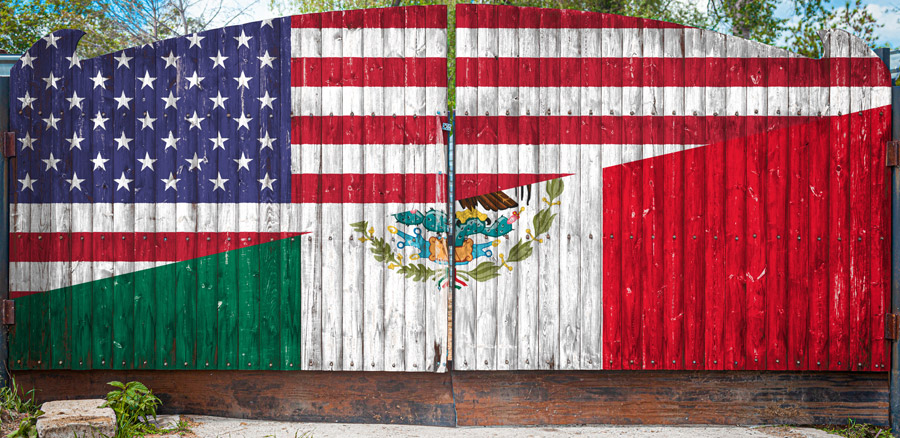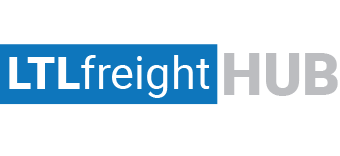Cross-Border Trucking: The Lifeline of US-Mexico Trade
A detailed look at the process and model to expedite cross border trucking
Cross-Border Trucking: The Lifeline of US-Mexico Trade
The United States and Mexico share one of the most significant and dynamic borders in the world, with cross-border trucking playing a pivotal role in the economic interdependence of the two nations. This intricate system not only facilitates the movement of goods but also underscores the vital relationship between the U.S. and Mexico. From the bustling factories in Mexico to the consumer markets in the U.S., cross-border trucking ensures that supply chains remain robust and efficient. This blog will delve into the critical aspects of moving freight across the border, the stringent requirements for shipping and customs, the necessary paperwork, and the opportunities provided by programs like the Customs-Trade Partnership Against Terrorism (CTPAT).
Moving Freight Across the Border
Cross-border trucking involves a well-coordinated process that begins with picking up freight from various locations in Mexico, often from maquiladoras—manufacturing plants located in free trade zones. These facilities produce a wide range of goods destined for the U.S. market, taking advantage of favorable trade agreements and lower labor costs.
Once the freight is ready for shipment, it is transported to a port of entry. These ports of entry are critical junctures where goods are inspected, documented, and cleared for entry into the United States. The journey from a maquiladora to the border involves navigating a complex web of logistics, ensuring that the cargo is secure, properly documented, and ready for customs inspection.

Requirements for Shipping and Customs
The requirements for shipping goods across the U.S.-Mexico border are stringent, designed to ensure the security and integrity of the supply chain. One of the primary requirements is the preparation of detailed shipping documentation, including the commercial invoice, bill of lading, and packing list. These documents provide critical information about the goods being shipped, including their origin, value, and classification under the Harmonized Tariff Schedule.
Customs declarations must be meticulously prepared to avoid delays and ensure compliance with U.S. Customs and Border Protection (CBP) regulations. Accurate classification of goods is essential, as incorrect classifications can lead to penalties and increased scrutiny. Importers must also comply with various regulatory requirements, including those related to safety, health, and environmental standards.
Paperwork and Filing Requirements
The paperwork and filing requirements for cross-border trucking are comprehensive and involve several key documents. The primary documents include:
- Commercial Invoice: Details the transaction between the buyer and seller, including the price, terms of sale, and description of the goods.
- Bill of Lading: A contract between the shipper and carrier that outlines the terms and conditions of the transportation.
- Packing List: Provides detailed information about the contents of each package, facilitating customs inspection.
- NAFTA Certificate of Origin: For goods qualifying under the North American Free Trade Agreement (now USMCA), this document certifies that the goods meet the criteria for preferential tariff treatment.
- Customs Declaration: A formal statement providing information about the goods being imported, including their classification, value, and country of origin.
These documents must be accurately completed and submitted to CBP to ensure a smooth customs clearance process. Errors or omissions can result in delays, fines, and additional inspections.
The Role of CTPAT
The Customs-Trade Partnership Against Terrorism (CTPAT) is a voluntary program that plays a crucial role in enhancing the security of the supply chain. By joining CTPAT, companies agree to work with CBP to protect the supply chain, identify security gaps, and implement specific security measures. Membership in CTPAT offers numerous benefits, including reduced inspections, expedited processing, and access to dedicated lanes at border crossings.
Opportunities Provided by CTPAT
CTPAT members are considered low-risk and are therefore less likely to be subject to extensive inspections at U.S. ports of entry. This designation not only speeds up the border crossing process but also enhances the overall efficiency of the supply chain. Some of the specific benefits of CTPAT membership include:
- Reduced Number of CBP Examinations: Lower frequency of inspections reduces delays and associated costs.
- Front of the Line Inspections: Priority processing for CTPAT shipments accelerates the movement of goods.
- Exemption from Stratified Exams: Certain high-risk exams are waived for CTPAT members.
- Shorter Wait Times at the Border: Expedited processing through dedicated FAST lanes minimizes border wait times.
- Supply Chain Security Specialist: Dedicated support from CBP to address security issues and improve compliance.
- Access to CTPAT Portal and Training Materials: Comprehensive resources to enhance supply chain security practices.
- Recognition by Foreign Customs: Mutual recognition agreements with other countries extend the benefits of CTPAT membership internationally.
- Eligibility for U.S. Government Pilot Programs: Participation in programs like the FDA’s Secure Supply Chain program.
- Business Resumption Priority: Preferential treatment in the event of a natural disaster or terrorist attack.
- Participation in Importer Self-Assessment Program (ISA): Streamlined compliance processes for importers.
- Priority at Centers of Excellence and Expertise: Enhanced support from CBP’s specialized industry centers.
The Journey of Freight
The journey of freight from a maquiladora in Mexico to its final destination in the U.S. involves several critical steps. After being picked up from the manufacturing facility, the freight is transported to a port of entry. Here, the necessary paperwork is submitted to CBP, and the cargo undergoes inspection. Once cleared, the freight is moved to a warehouse on the U.S. side of the border, where it may be stored temporarily before being transported to its final destination.
The final leg of the journey involves delivering the freight to its intended recipient in the U.S. This process requires careful coordination between various stakeholders, including shippers, carriers, customs brokers, and freight forwarders. The efficiency of this system is crucial to maintaining the seamless flow of goods across the border, ensuring that supply chains remain resilient and responsive to market demands.
Conclusion
Cross-border trucking is a vital component of the U.S.-Mexico trade relationship, facilitating the efficient movement of goods and supporting economic growth on both sides of the border. The complexities of shipping and customs requirements, along with the stringent paperwork and filing processes, underscore the importance of careful planning and compliance. Programs like CTPAT play a critical role in enhancing supply chain security and providing significant benefits to participants. As the global trade landscape continues to evolve, cross-border trucking will remain an essential link in the supply chain, driving prosperity and fostering collaboration between the United States and Mexico.
LET’S CONNECT
- Contact Us
- Call Us
- Text Us


